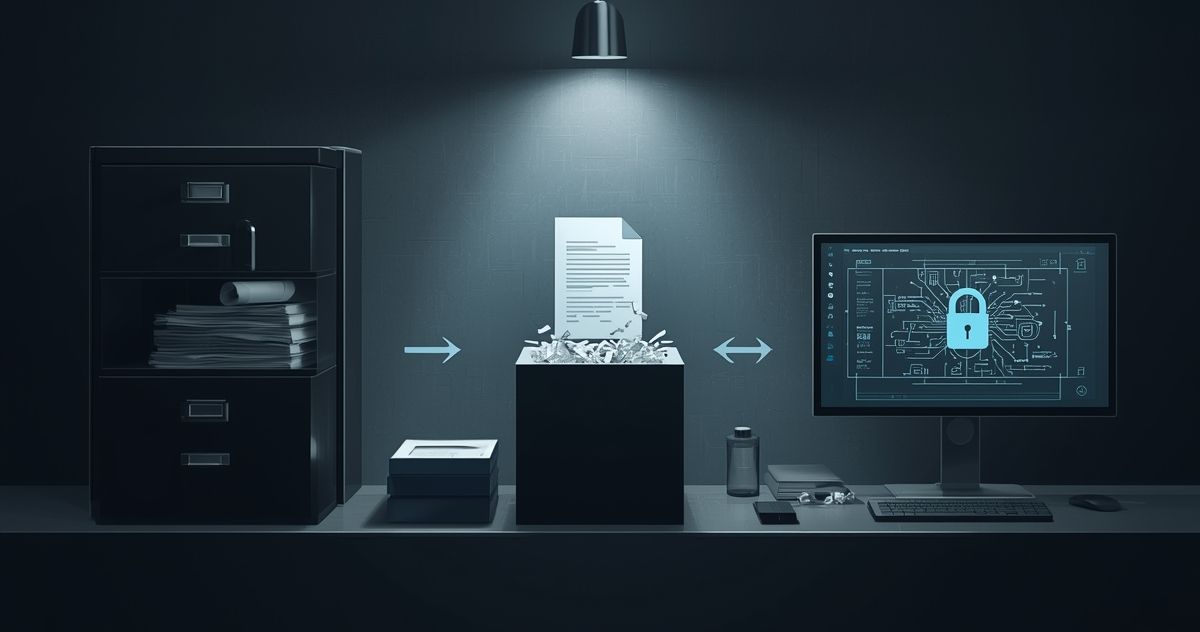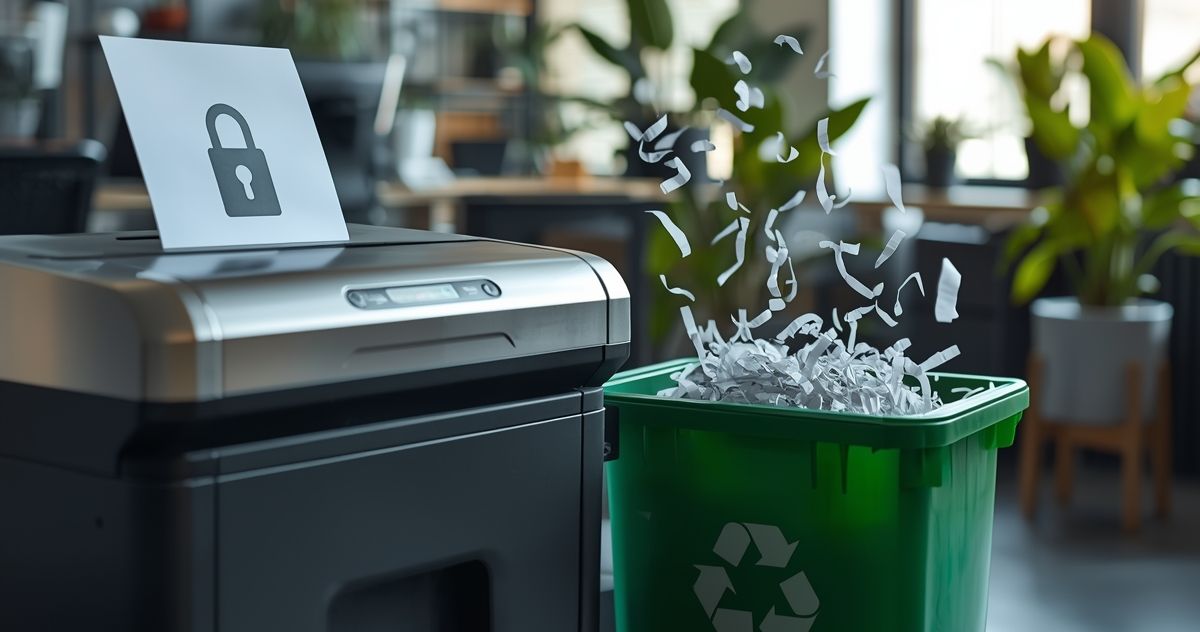Can AI Reconstruct Data from 'Destroyed' Devices? A Look at Emerging Threats
Can AI Reconstruct Data from 'Destroyed' Devices? A Look at Emerging Threats
The increasing sophistication of artificial intelligence (AI) has brought remarkable advancements, from autonomous vehicles to real-time language translation. But as technology evolves, so do its potential risks.
One of the latest concerns facing cybersecurity professionals and data recovery experts is the possibility of AI reconstructing data from supposedly "destroyed" devices. Imagine disposing of a hard drive or smartphone with sensitive information, only to discover that advanced AI techniques could revive the deleted or fragmented data.
This blog explores how this emerging technology works, its implications for businesses and individuals, and how you can protect yourself from these potential threats.
What Does "Data Reconstruction" with AI Mean?
Data reconstruction, in essence, involves piecing together fragments of data from a damaged, encrypted, or deleted source. Traditionally, this process required highly skilled data recovery experts and specialized tools. AI has revolutionized this field by automating and accelerating the process while significantly improving accuracy.
Here’s how AI factors in:
- Pattern Recognition: AI can analyze vast amounts of data faster than any human could and identify patterns that help reconstruct missing or mismatched information.
- Machine Learning Models: Advanced models train on massive datasets to accurately predict and fill the gaps in fragmented files.
- Image and Signal Processing: AI can extract data from corrupted files, signals, or even physical media like scratches on a hard drive.
Imagine a shredded document being pieced back together virtually with high-resolution images and AI. The same concept applies to hard drives, memory cards, and even mobile devices once believed to be "securely" destroyed.
Not Just Sci-Fi Anymore
While the idea of AI-enabled data recovery might sound like a plotline out of a sci-fi movie, it’s real and already in use by forensic investigators, cybersecurity experts, and even criminals.
Why Is It a Growing Threat?
As AI continues to improve, the risks associated with data reconstruction are becoming more tangible. Here are the key reasons why:
1. Rise of Data Breaches
Even companies with robust security measures aren’t immune to data breaches. AI-enabled data reconstruction could provide malicious actors with another avenue to retrieve supposedly destroyed or encrypted information. This could lead to leaked personal details, proprietary business data, or government secrets.
2. Recycling and Disposal of Hardware
Businesses often dispose of old hardware such as hard drives, USB sticks, and servers without fully understanding the risks. Even when a device is physically destroyed, there’s a slight chance that AI could retrieve fragments of critical data from remaining components.
3. AI's Growing Accessibility
AI tools once exclusive to elite institutions or well-funded organizations are now more accessible to the general public. Open-source platforms and affordable cloud computing have made it possible for even small-scale actors to leverage AI for harmful purposes.
4. Forensic Advancements
While AI-powered data reconstruction serves positive purposes, such as solving crimes or recovering critical data, the same tech could fall into the wrong hands when used unethically. Hackers and bad actors could exploit it for espionage or blackmail.
What Can Be Done to Protect Data?
Although the potential threat of AI reconstructing "destroyed" data is concerning, there are steps businesses and individuals can take to protect themselves.
1. Use Professional Data Destruction Services
There’s a difference between deleting or formatting your device and truly "destroying" the data. Services likeDataShredder Corporation ensure data is unrecoverable by physically dismantling hardware or using advanced methods like magnetic degaussing. With certifications and compliance with industry standards, professional services provide peace of mind that your sensitive data is permanently erased.
2. Employ Encryption Before Deletion
Encrypting your files before deleting them makes data reconstruction harder, even for advanced AI systems. Even if fragments are retrieved, the encryption will act as an additional layer of security.
3. Shred or Destroy Hard Drives
Simple formatting is not enough. Physically dismantling and shredding hard drives ensures the physical components holding data are destroyed completely.
DataShredder Corporation specializes in secure hard drive data destruction and lets you verify the process in real time.
4. Data Overwriting Tools
Instead of relying on basic data deletion methods, use data overwriting software such as Disk Wipe or Recuva. These tools overwrite your data with random patterns, making it incredibly difficult to reconstruct.
5. Regular Security Audits
Businesses need to regularly assess their data management practices to identify vulnerabilities. Staying compliant with regulations like GDPR or CCPA is essential for maintaining strong security practices.
6. Stay Updated on Emerging Technologies
Cybersecurity professionals must stay informed about advancements in AI in order to better anticipate vulnerabilities and implement robust protective measures.
The Silver Lining: Ethical AI Applications in Data Recovery
While concerns about AI being used maliciously are valid, it’s important to recognize its ethical and beneficial applications. For instance:
- Data Recovery After Disasters: AI can help businesses recover data lost due to natural disasters or system failures.
- Forensic Investigations: Law enforcement agencies use reconstructed data to solve crimes and gather evidence.
- IT Management: AI enables businesses to retrieve accidentally deleted files, minimizing downtime.
The key lies in ensuring these tools remain in the hands of ethical users.
Building a Cybersecure Future
The ability of AI to reconstruct data from devices thought to be secure or destroyed represents both an incredible advancement and a significant threat. To stay ahead, cybersecurity professionals, businesses, and individuals must recognize the potential risks and adopt proactive measures.
Are you ready to securely dispose of your hard drives?
Do you have old devices lying around? Don’t wait for them to gather dust. At Data Shredder Corporation in Massachusetts, we understand how crucial it is to destroy sensitive data securely and e-waste recycling in Massachusetts.
We're here to offer you the best data destruction, shredding, and electronics recycling services in Massachusetts, ensuring your peace of mind while contributing to the planet's health. We also provide top-notch hardware asset management services.
Your trust is our top priority, and we're dedicated to safeguarding your information with our certified, dependable solutions. Before a security breach even whispers your name, give us a call at(508) 915-7235 or fill out our
contact form.











Share On: